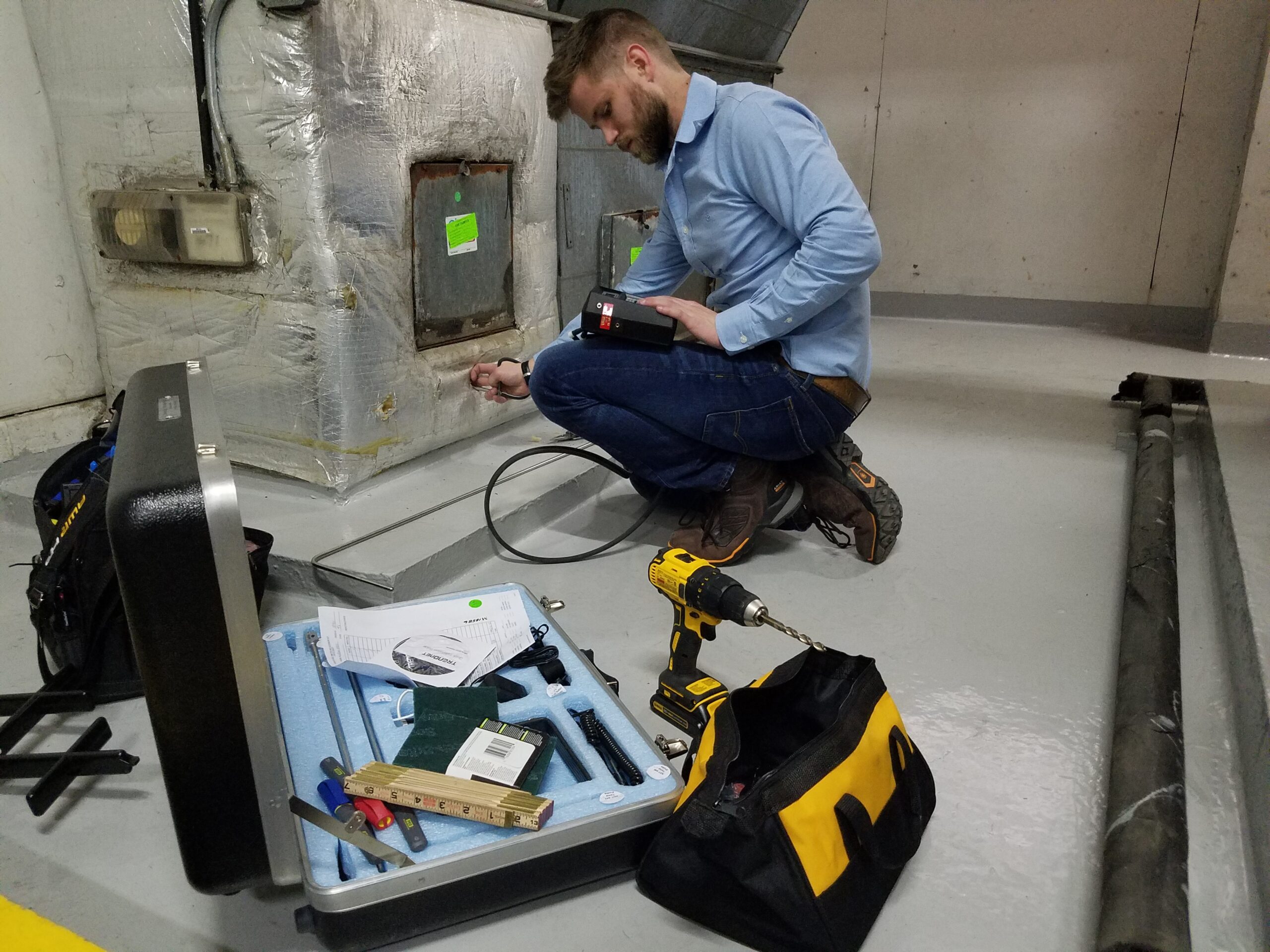Ask an Expert: Is it Actually Duct Leakage?
It is easy to blame duct leakage when Test and Balance (TAB) results aren’t adding up. But could the issue be improper balancing instead? Over the years, I’ve seen many projects where discrepancies in airflow readings were hastily attributed to duct leakage. This assumption often lacks thorough proof. It is important to remember that simply comparing a flow hood reading to a final traverse isn’t enough evidence to determine causality. You need more data before jumping to conclusions.
Follow the Evidence
For instance, if your supply duct passed the pressure test, the insulation isn’t visibly deformed, and there’s no air escaping from a punctured hole, duct leakage is probably not the culprit. Chasing down suspected duct leakage can drain time and resources. The evidence must be solid before proceeding down that path.
TAB Data and Reports
Start by reviewing the TAB report or preliminary TAB data. Did the contractor apply correction factors to the grilles? Were they using the right tools for the job? How do you verify this? Most TAB contractors use three primary tools for airflow verification: the balometer / flow hood, anemometer, and velocity grid (velgrid). Occasionally, contractors will use a hotwire anemometer, though it is typically impractical for field use without a mounting stand.
Balanced or Calibrated
The flow hood is the most common tool you’ll see in action, recognizable as the large blue or red device used to measure airflow from diffusers. What many don’t realize—or may have forgotten—is that these tools are for balancing, not calibration. They don’t provide accurate measurements across all diffuser types or airflow directions; they simply offer consistency… usually.
Why does this matter? Because many TAB contractors assume these results are as accurate as a traverse measurement. When the numbers don’t match, they often blame duct leakage. However, a traverse is the gold standard for field airflow measurement, and all other tools should be compared against it.
Traverse Calculations: The Gold Standard
A traverse involves drilling holes in the ductwork and taking velocity readings at several points using a pitot tube or airfoil connected to a manometer. The average velocity is multiplied by the duct’s cross-sectional area to calculate airflow in Cubic Feet per Minute (CFM). The most accurate traverse results are obtained with this formula: (Air Velocity) x (Duct Area) = (Airflow CFM).
Comparing balancing tool readings with a traverse allows the TAB contractor to establish correction factors for each grille type. To do this, they isolate a grille with a straight duct run, take a reading with their balancing tool, then perform a traverse calculation on that grille. They obtain the correction factor using this formula: (Traversed Flow) / (Balancing Tool Flow) = (Correction Factor). This correction factor is applied to future readings for that grille type to provide accurate airflow readings.
Data Accuracy
For instance, linear slot diffusers typically show a 10-15% variance compared to a traverse. So, each time a TAB contractor reads a linear slot diffuser, they would multiply the correction factor by the tool reading to get the actual airflow: (Flow Hood Reading) x (Correction Factor) = (Actual Airflow). Though this process can be tedious, it is crucial for accuracy, especially when project tolerances are tight—often within 5%.
The Results Speak for Themselves
If a TAB contractor claims duct leakage and presents their data without showing traverses or correction factors (or all correction factors are mysteriously 1.0), ask them to validate their correction factors on-site. I’ve had to send contractors back to projects to establish correction factors after they reported low flow, duct leakage, pressure issues, or high flow. Nearly every time, the problem was resolved within hours, despite the project being delayed for months due to these claims. By understanding and incorporating these best practices, experienced commissioning providers can greatly reduce troubleshooting time, to ensure your project stays on track and hits its deadlines.


